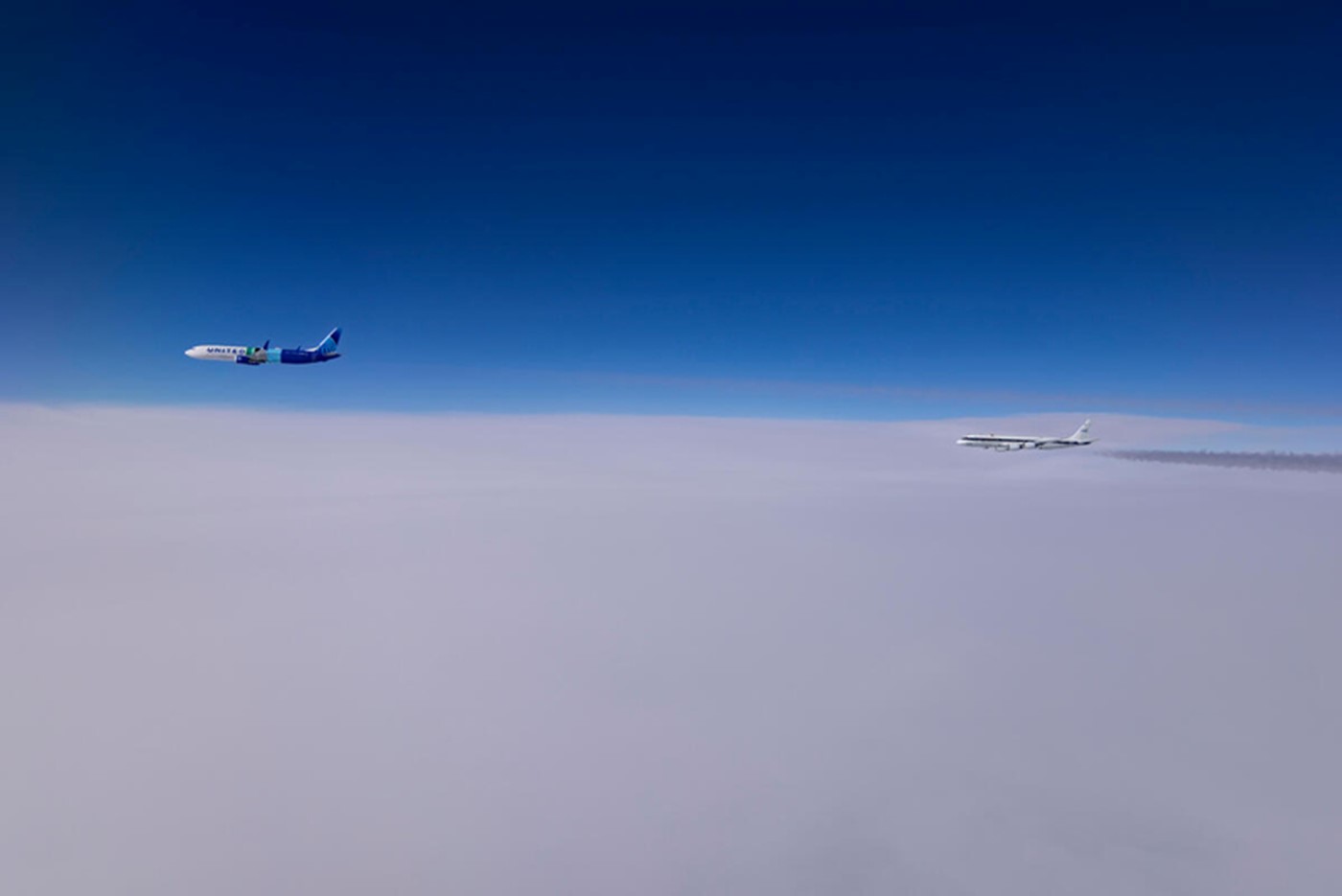The Boeing ecoDemonstrator Explorer, a 737-10 destined for United Airlines, flies through cold humid air at 35,000 feet. In its wake, it leaves a wispy vapor trail known as a contrail. A DC-8, stealthily following five miles behind, is there to investigate.
As the Explorer switches between 100% sustainable aviation fuel (SAF) in one tank to conventional jet fuel in the other, National Aeronautics and Space Administration’s (NASA) DC-8 Airborne Science Lab follows behind to analyze the emissions.
“We're able to carry the two fuels on the aircraft simultaneously without any mixing or cross-contamination,” said Bill Griffin, technical lead for the Boeing ecoDemonstrator program. “Then we fly through very similar atmospheric conditions using each fuel to understand how the emissions and the contrails differ from one fuel to the other under those same engine settings.”
The odd couple: This orchestrated ballet between the two airplanes – one a model of modern efficiency and the other fifty years in service loaded with atmospheric sensors and instrumentation – played out in the skies over the Pacific Northwest for eleven flight tests.
“On the lead aircraft, the Boeing 737-10, we have the detailed combustion knowledge from Boeing’s flight test team and GE Aerospace to tell us how we can adjust the fuel and engine properties so that we're able to dial in precisely a contrail that will be comparable when we switch from sustainable aviation fuel to conventional jet fuel,” said Richard Moore, lead NASA research scientist. “On the DC-8 flying laboratory, we have the expertise of NASA, DLR and our university partners measuring the composition of the atmosphere.”
Why it matters: The test campaign and ensuing months of data analysis will build on the industry’s knowledge of how SAF can affect the characteristics of contrails – and how it may mitigate the clouds’ warming effects.
- “Contrails appear to have a contribution to the climate impact of airplanes and their emissions,” said Steve Baughcum, Product Development emissions technical fellow. “The persistence of the contrails – how long they last – can make a difference so we’re studying how a lean combustor and cleaner sustainable fuels can affect the contrails' characteristics.”
Zoom in: SAF can reduce carbon emissions up to 85% over the fuel’s life cycle and offers the industry’s greatest potential to reduce its climate impact over the next 30 years.
- Compared to conventional jet fuel, SAF produces less soot when burned. Since soot particles are the seeds for contrail ice crystal formation, SAF holds great promise for combatting contrails in addition to their significant air quality benefits for communities near airports.
- The team is studying the impact of advanced engine combustor designs, flight routes, and other technology solutions on reducing contrails.
- “By burning sustainable aviation fuel, we can show that the particle emissions are reduced, the ice crystal numbers in the contrail are reduced, and that reduces the climate impact from contrails,” said Christiane Voigt, German Aerospace Center (DLR) research team lead.
For more information on contrails, watch this video.
It takes a village: More than 100 people contributed to the testing which is part of Boeing’s multi-year partnership with NASA to analyze SAF emissions, pairing Boeing engineering with NASA research capabilities.
- United Airlines provided the 737-10 test platform to the Boeing ecoDemonstrator Program. DLR supplied the experts and instrumentation for the campaign and the Federal Aviation Administration helped fund the project through the ASCENT Center of Excellence. GE Aerospace also provided technical expertise and project funding as well.
Bottom line: “We understand that commercial aviation leads to climate change and we take responsibility for really addressing our impact on climate and taking action so that we can mitigate those emissions,” said United Chief Sustainability Officer Lauren Riley.
“One thing is very clear – to reduce aviation’s impact on the climate, it takes better airplanes and better fuels,” said Mike Sinnett, vice president and general manager of Product Development. “That’s exactly what this team is trying to do today.”
Coverage of testing can also be found on the front page of the Seattle Times.
